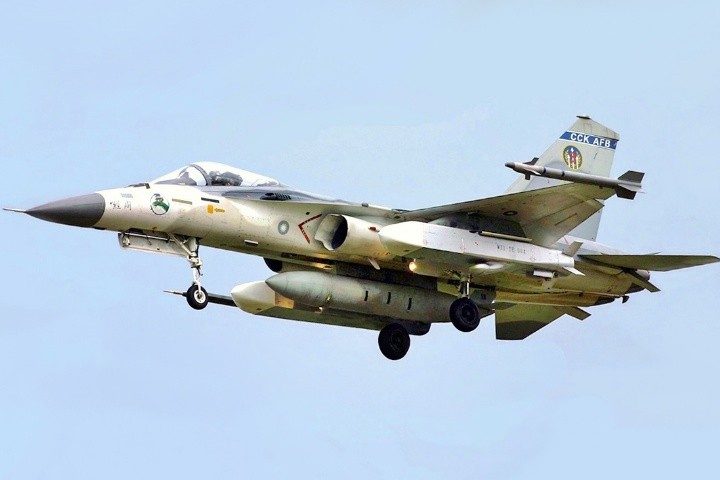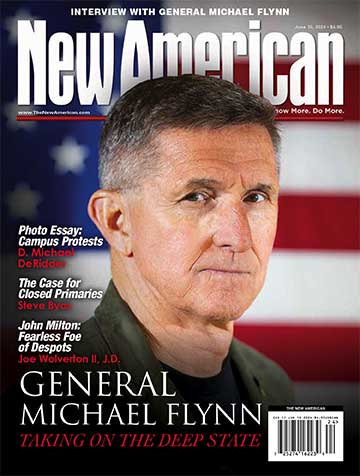
Taiwan hastily gathered fighter jets to warn away 39 Chinese aircraft that came into its southeastern air defense zone, the island’s Defense Ministry announced on Thursday.
Taiwan has slammed frequent missions by the Chinese air force over the last two years, usually in southern areas of its air defense identification zone, or ADIZ.
Thursday’s provocation by China involved 21 fighters and four H-6 bombers, as well as early warning, antisubmarine, and aerial refueling aircraft, Taiwan’s Defense Ministry said in a report describing Chinese actions in its ADIZ over the past 24 hours.
Many of the aircraft flew over a waterway called the Bashi Channel to an area off the island’s south-eastern coast, based on a map provided by the ministry. Three Chinese navy ships were also noticed near Taiwan, the ministry said.
In response, Taiwan dispatched unspecified combat aircraft to warn away the Chinese planes, while missile systems kept close tabs on their flight, the ministry said, using standard wording for its response. Separate Taiwanese government notices have revealed that the Defense Ministry’s research and development arm, the National Chung-Shan Institute of Science and Technology, is conducting a missile firing drill this week on the island’s south-eastern coast.
The communist regime in mainland China — which considers Taiwan a renegade province awaiting reunification, by force if necessary, has escalated military, economic, and diplomatic pressure in recent years on Taiwan to accept Beijing’s rule. Nationalist forces escaped to Taiwan after losing a civil war to the Chinese Communist Party in 1949.
Taiwan’s government under President Tsai Ing-Wen dismisses the Chinese claims that Taiwan is part of China and maintains that Taiwan wants peace but will defend itself if attacked.
Earlier this month, China also dispatched a record 18 nuclear-capable bombers into Taiwan’s air-defense zone, Taipei said, just days after Beijing banned more Taiwanese imports in recent indications of worsening relations.
Taiwan’s Defense Ministry said of the earlier Chinese incursion that 21 aircraft entered the island’s south-west ADIZ within 24 hours, including 18 nuclear-capable H-6 bombers.
The sortie came after China imposed fresh import restrictions on Taiwanese fishery products, food, beverages, and alcohol. Subsequently, Taiwanese Premier Su Tseng-chang accused Beijing of breaching international trade rules and “discriminating” against the island.
The H-6 is China’s main long-distance bomber and is able to carry nuclear payloads.
It is uncommon for China to dispatch more than five H-6 bombers in one day. However, such waves have increased ostensibly in recent weeks.
Until recently, October 2021 was the month with the greatest number of H-6 flights on record, at 16.
Nonetheless, in November this year, China sent 21 of the bombers into Taiwan’s ADIZ.
Many nations maintain their own ADIZ, including the United States, Canada, South Korea, Japan, and China. An ADIZ is not the same as a country’s airspace.
Instead, it involves a much broader area, in which any foreign aircraft is supposed to declare itself to the local aviation authorities.
Taiwan’s ADIZ is much larger than its airspace and overlaps with part of China’s ADIZ, and covers some of the mainland.
In October, China indicated its plans to study the Ukraine-Russia crisis to develop “hybrid warfare” strategies against Taiwan, including using drones and psychological pressure, a senior Taiwanese security official revealed.
Speaking in Parliament, Taiwan’s National Security Bureau Director-General Chen Ming-tong remarked on how China was drawing lessons from the Ukraine crisis.
“This year, the communist military has borrowed from the experience of the Russia-Ukraine war to develop ‘hybrid warfare’ against Taiwan and strengthen its combat training and preparation against strong enemies,” he told lawmakers.
Following China’s August drills that were meant to express outrage at US House Speaker Nancy Pelosi’s visit to Taiwan, China broadened its “gray zone” and hybrid activities against Taiwan, particularly by using drones that have hovered both near Taiwan-controlled islands off China’s coast and into Taiwan’s ADIZ, Chen said.
Taiwan said China’s “gray-zone” warfare campaign involves irregular tactics to tire a foe without the need for open combat, like regularly entering Taiwan’s air defense zone and prompting Taiwan’s air force to scramble.
China has posted images of Taiwan’s military online to “slander” it and undermine the government, he said, alluding to a video that circulated on Chinese social media in August of Taiwanese soldiers on offshore islands taken by drones.
These activities “highlight that the Chinese communists have increased their cognitive warfare, gray zone activities and other hybrid methods, which have constituted a new form of threat to national security,” Chen added.
China’s Taiwan Affairs Office did not immediately respond to a request for comment. China has put the responsibility on Taiwan for the rise in tensions, accusing Taiwan of “colluding” with foreign forces against Beijing to advocate for the island’s formal independence.
For its part, Taiwan has also been closely monitoring the lessons of the Ukraine war as a guide to show how it may react should China use military force to impose its sovereignty claim.
Taiwan is enhancing its defenses in the wake of the increased Chinese pugilism, and navy commander Chiang Cheng-kuo said that entails a new generation of destroyers as its fleet of 26 main warships was on average 20 to 30 years old.
“We’re planning for the capital ships, but the tonnage is yet to be decided,” he said at a Parliament session.
Chen said China’s military threats had garnered backing from the United States and its allies for Taiwan to ensure the Ukraine crisis would not be replicated across the Taiwan Strait.
The United States under the administration of President Joe Biden has adhered to a policy of “strategic ambiguity” on whether the United States would step in to protect Taiwan if China invaded the island.
Such support will boost Taiwan’s ability to counter China and thwart “their plots to attack Taiwan,” Chen said.



